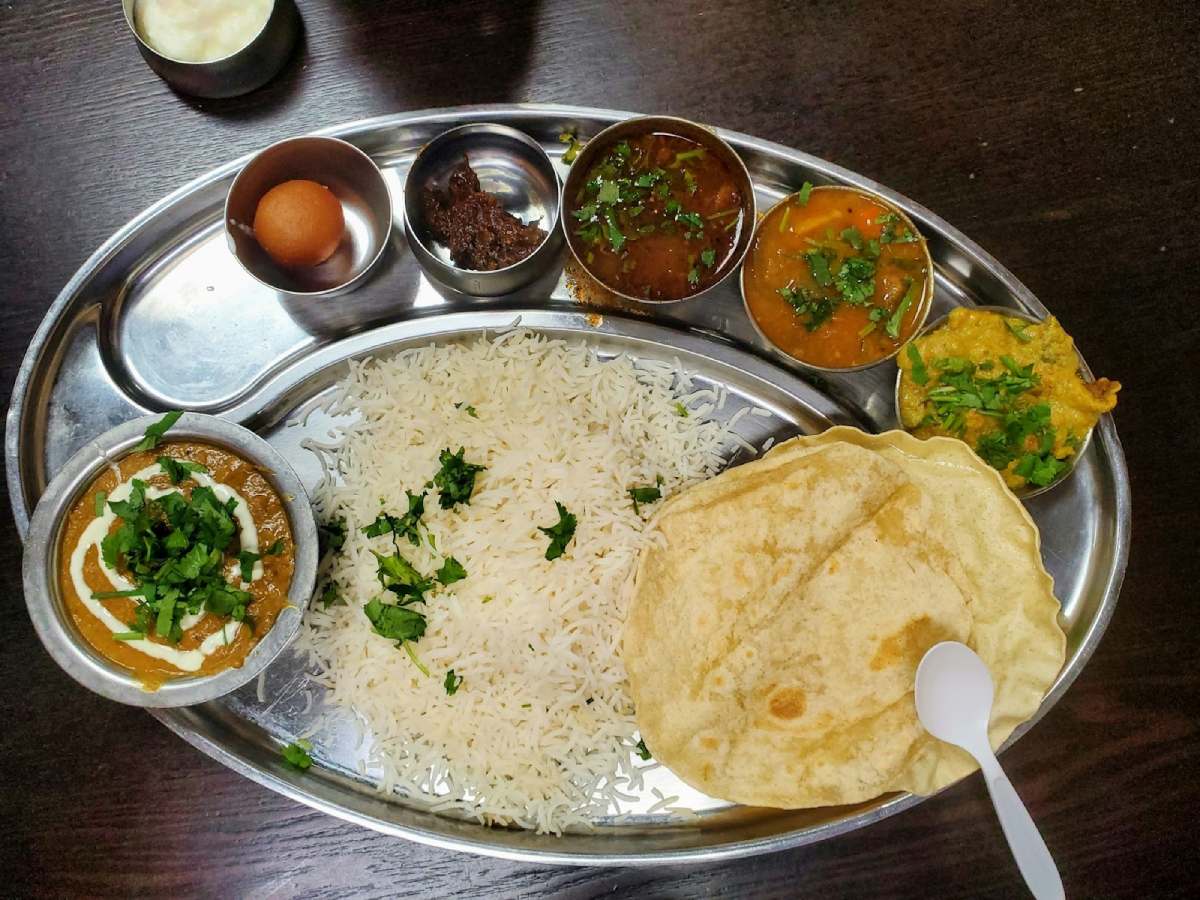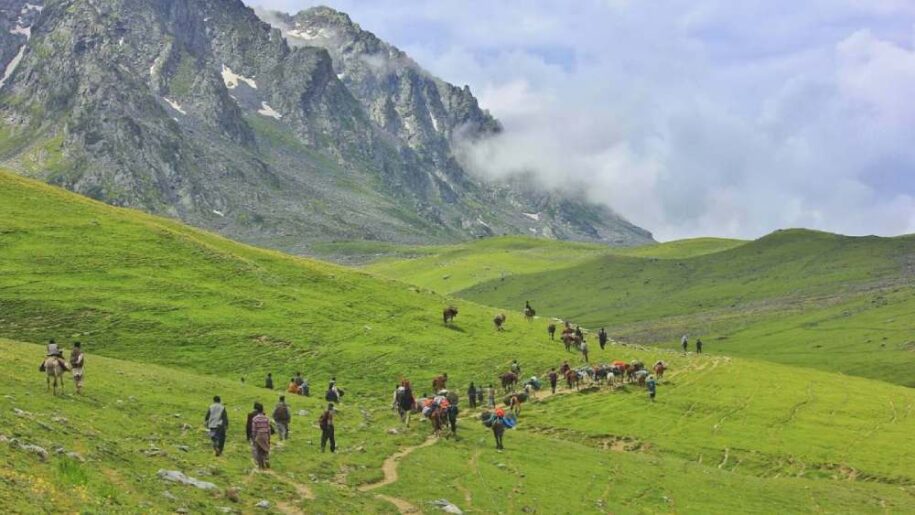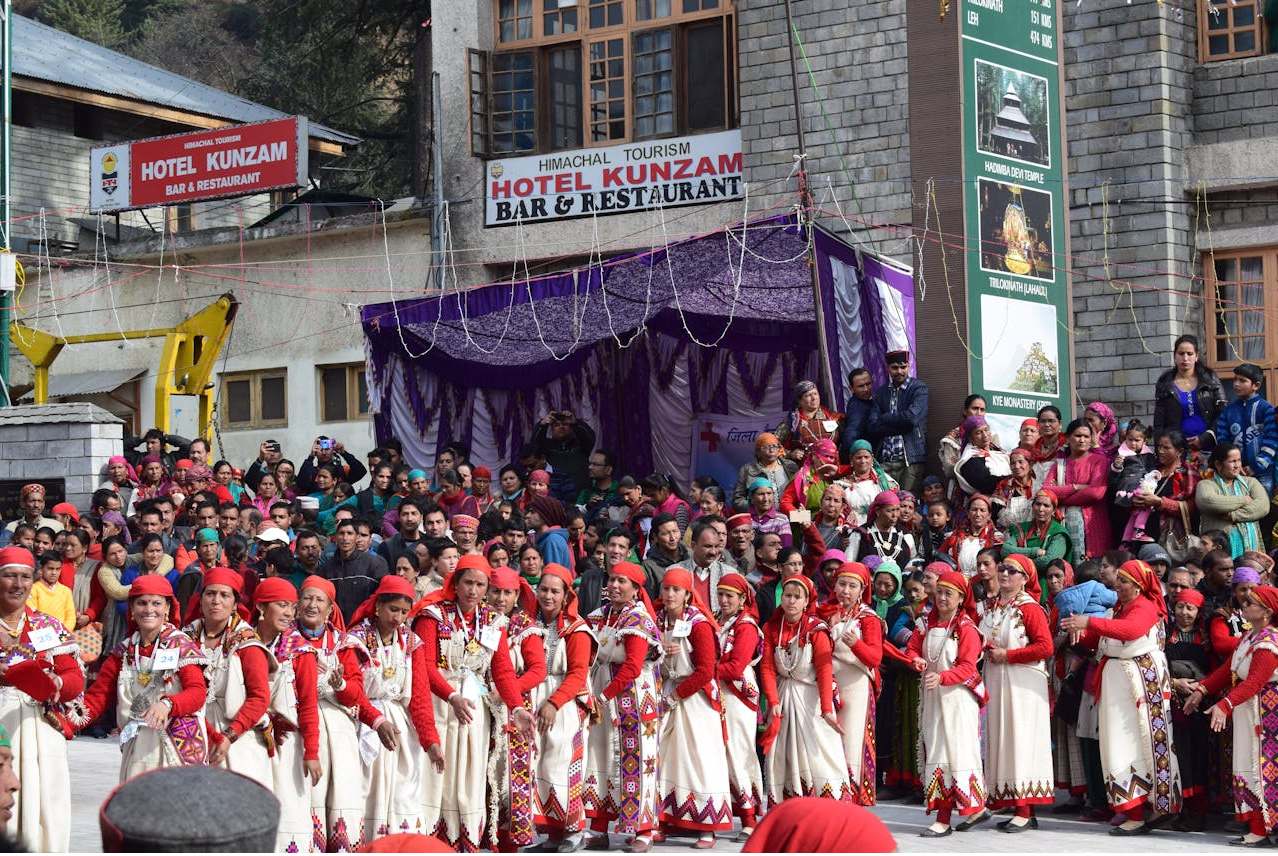Mountain life, with its stunning landscapes and unique challenges, is often shaped by a rich tapestry of cultural traditions. These traditions are most vibrantly expressed through festivals, which serve as a nexus where local life, history, and community spirit converge. Exploring these cultural trails offers a profound insight into the heart of mountain communities, revealing stories passed down through generations.
Manali’s Doongri Fair
The Doongri Fair, also known as the Hadimba Devi Fair, is one of Manali’s most well-known celebrations. Every spring, it happens close to the Hadimba Temple. They perform dances that have been handed down through the years, play folk music, and dress in vibrant traditional attire. The three days of the fair are filled with devotion, laughter, and joy.
Alongside this, the local markets of Manali are also part of the cultural experience. Small bazaars and stalls sell woolen shawls, handmade caps, and wooden carvings. These crafts are not just souvenirs but a reflection of the skill and creativity of the Himachali people.
Festivals of Mountain Life
Mountain life festivals, in many regions, are simple yet full of meaning. They celebrate the arrival of spring, the harvest season, or the gratitude for a good year. These events often include folk dances, local songs, and offerings to natural deities believed to protect the villages. For example, spring festivals are marked by flower decorations, traditional music, and dances that symbolize renewal and fertility.
Harvest celebrations bring entire communities together to thank the earth for its abundance, with feasts that feature locally grown grains, fruits, and dairy products. What makes these festivals remarkable is how they blend joy with reverence for nature, reminding us of the deep relationship between humans and their environment.
Everyday Mountain Life
Beyond celebrations, everyday living demonstrates the mountains’ cultural diversity. Villages are frequently self-sufficient, with people working in traditional crafts, farming, and animal husbandry. Daily tasks like gathering firewood, caring for cattle, or going great distances for water are shared duties, and stone and wooden homes mix in perfectly with the surroundings. Community spirit runs deep, and neighbors are always ready to lend a hand. This way of life, though simple, teaches resilience, cooperation, and respect for the natural world.
Community Bonds and Traditions
One of the most striking aspects of mountain life is the strong sense of community. Festivals, weddings, or even routine agricultural work bring people together. Meals are often shared, and no celebration is complete without the entire village’s involvement. Traditional wisdom and skills are passed down through generations, whether it’s weaving wool into warm clothing, crafting tools, or preserving local recipes.
Elders tell stories about gods, spirits, and ancient heroes to preserve cultural knowledge, therefore storytelling also plays a significant part.
The Hospitality of Mountain Communities
Another enriching aspect of local mountain life is hospitality. Guests are treated with immense warmth, and visitors often find themselves welcomed with traditional food, tea, or homemade delicacies. During festivals, outsiders are invited to join in the celebrations, participate in dances, and share meals. This openness reflects the values of generosity and kindness that are ingrained in mountain societies. Experiencing such hospitality allows travelers to feel like part of the community rather than outsiders.

Preserving Traditions in Modern Times
Even though many mountainous areas have been impacted by modernisation, local populations work hard to maintain their unique identity. Younger generations are encouraged to take part in folk dances, music, and rituals, and festivals are celebrated with the same fervour. In the meantime, mountain life keeps evolving, fusing customs with contemporary possibilities. This balance ensures that while progress takes place, the essence of mountain culture remains intact for generations to come.
Conclusion
The cultural trails and local life in the mountains are a beautiful blend of tradition, resilience, and harmony with nature. Festivals, music, crafts, and daily practices reflect a lifestyle that is both simple and profound. In the mountains, culture is not confined to rituals or celebrations it is lived every day, in every song sung, meal prepared, and craft created. For those who journey to the mountains, experiencing this cultural richness is as rewarding as witnessing the natural beauty. It leaves a lasting impression of how humans can coexist with their environment while cherishing community and tradition.



Leave a Reply